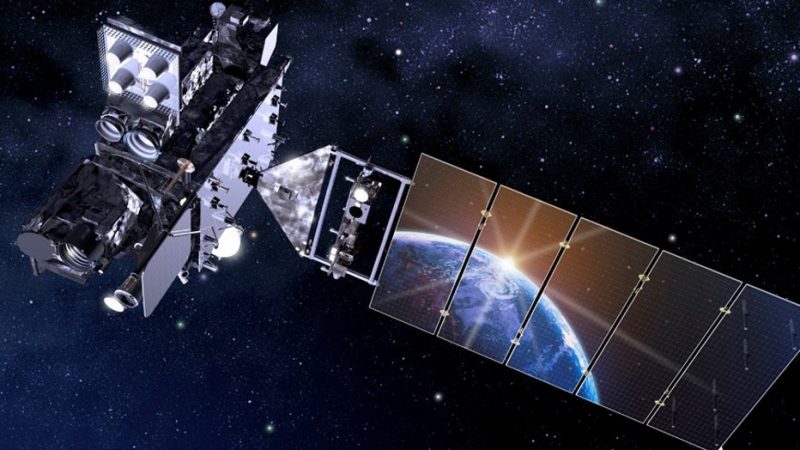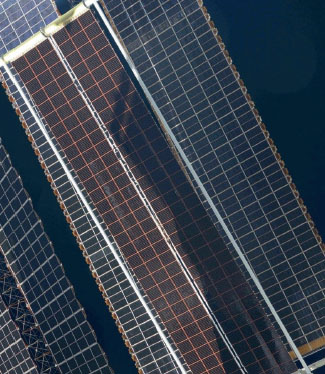
Space technology plays a vital role in protecting and improving life on Earth, with new innovations benefiting Earth in completely new ways. Redwire technology is making an impact to benefit our home planet, from providing critical spacecraft components for Earth observation satellites to developing materials in space for use on the surface.
Understanding Earth with Weather & Climate Change Observation Satellites
There are many Earth observation satellites carrying advanced instruments to monitor Earth’s atmosphere, support weather forecasting, and fulfill countless other functions. Satellite remote sensing has become an operational tool for weather forecasting and climate change research through mapping, supervising, and monitoring the Earth, while also helping scientists study the effects of climate change on our planet.
Redwire has provided critical hardware for several Earth-observing satellites, which enable remote sensing and image capturing for both short and long-term Earth weather and climate observations. NASA missions like GOES, ICESat-2, and LandSat have relied on important Redwire technology, like sun sensors and star trackers. In addition to enabling critical functions that keep these satellites in orbit, Redwire technologies are providing essential data for scientists to analyze how our planet is changing and research ways to fix critical problems around the globe.


Space-Enabled Manufacturing: Producing Advanced Materials in Microgravity
The International Space Station (ISS) is humanity’s orbiting laboratory, providing a unique vantage point to monitor our planet. The astronauts on board the ISS are also responsible for conducting experiments and testing new technologies that benefit life on Earth.
Redwire’s Industrial Crystallization Facility (ICF), which launched to the ISS in 2021, was designed to provide proof-of-principle for diffusion-based crystallization methods to produce high-quality optical crystals in microgravity. These microgravity-developed crystals can be used to develop improved laser optics products on Earth.
Similarly, Redwire’s Turbine Ceramic Manufacturing Module (CMM), which launched to the ISS in October 2020, is a commercial manufacturing facility that produces ceramic parts in microgravity for terrestrial use. CMM aims to demonstrate how ceramic manufacturing in microgravity could enable temperature-resistant, reinforced ceramic parts with better performance, including higher strength and lower residual stress. For high-performance applications such as turbines, nuclear plants, or internal combustion engines, even small strength improvements can yield years to decades of superior service life.
Studying Plants in Space for Improved Crops on Earth
Aboard the ISS, Redwire is testing new technologies that scientists and farmers can use to improve agricultural practices on Earth. With the Rewire-managed Advanced Plant Habitat (APH), researchers from Clemson University are studying how to grow cotton plants that can more efficiently use water and adapt to changing environments. The investigation, called “Unlocking the Cotton Genome to Precision Genetics” (Plant Habitat-05) investigation, will cultivate several cotton genotypes from cotton plant tissue cultures exposed to spaceflight inside APH.

Updating the International Space Station’s Power Supply
The many experiments happening onboard ISS for both commercialization and exploration efforts need a robust, dependable power supply.
Redwire’s ISS Roll-Out-Solar-Arrays (iROSA), developed in partnership with Boeing Space, are being used to augment the station’s power system, making it more solar efficient. These first-of-their-kind solar arrays roll out on top of the station’s existing arrays. iROSA arrays are twice as powerful as the current arrays and will increase the space station power supply by 20 to 30% and 120 kilowatts of energy, enough to power 40 homes.
The arrays are enabling more game-changing science to continue on board the ISS to benefit life here on Earth and beyond. The first four iROSA wings have already been installed and are operating as expected. Redwire is providing six arrays in total, with wings five and six delivered in March 2023.

Keeping Earth Safe with Space-Based National Security Technology
Space-based capabilities are critical to our safety here on Earth. Redwire is developing technologies that will support improved resiliency and space domain awareness, which are critical to national security. Ranging from innovative payloads and critical components, to digital engineering and in-space servicing, assembly and manufacturing, Redwire’s technology is enabling innovative capabilities and hybrid, distributed architectures supporting the Space Development Agency (SDA), the U.S. Space Force, and others.
Decades of space missions have informed our understanding of the Earth while new technologies are paving the way for an even deeper understanding of the planet and providing solutions for the many challenges we face. Redwire is committed to developing next-gen space technology that will accelerate humanity’s expansion into space while also helping us ensure a sustainable future for the planet we call home.







